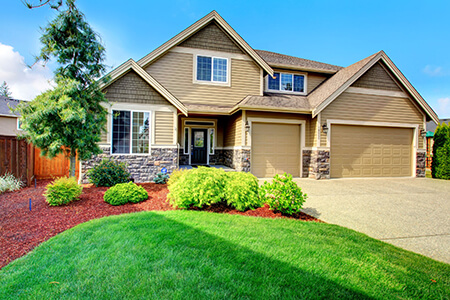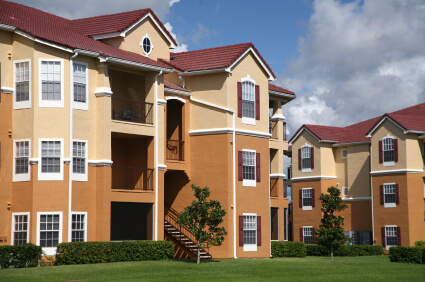Across the US, the average homeowner pays about $146 per month for homeowner’s insurance. However, the cost can vary greatly depending on a variety of factors, including your home’s value, your location, coverage options, and the deductible.
Compare Car Insurance Quotes and Save!
What Is the Average Cost of Homeowner’s Insurance?
The national average of $146 per month for homeowner’s insurance in 2024 comes to about $1,754 per year. This is an increase of close to 23% compared to the averages in 2023.
What Factors Affect the Price of Homeowner’s Insurance?
Insurance companies use a variety of criteria when calculating the cost of your policy. Some of the most important factors include where you live, the value of your home, and your coverage options. Here’s a closer look at these details.
Your Location
Where you live is one of the biggest factors when it comes to your insurance rates. Some states have higher rates compared to others.
High-cost states include Alabama, Colorado, Florida, Georgia, Kansas, Kentucky, Minnesota, Mississippi, Missouri, Nebraska, Oklahoma, Rhode Island, South Dakota, Texas, and Wyoming.
States with the lowest costs include Hawaii, Nevada, Vermont, New Hampshire, and New Jersey.
Overall, the coastal regions tend to have higher rates, due to the higher risk of damage due to severe weather.
Crime rates also affect insurance rates. Homes in high-crime areas are more likely to cost more to insure. Other details related to your location include proximity to a fire hydrant or a fire department. These features can help minimize damage to your home during a fire.
Homes located near forested areas or places with heavy vegetation may get higher rates. Properties near woods may suffer damage from trees falling while homes near brush are more prone to damage from nearby wildfires. These issues add to the risk of insuring your home, which boosts the cost of home insurance.
Home Value
The value of your home influences your home insurance premiums. The limits for dwelling coverage are often based on the potential cost of rebuilding your home in the event of total loss.
A higher-valued home is likely to have a higher cost to rebuild, due to size, materials, and custom features. Insurers calculate premiums based on the risk and potential cost of claims. As an expensive home requires more resources to repair or rebuild, it’s going to cost more to insure.
The national average of around $146 per month is based on the average dwelling coverage of $250,000. If your home is valued higher, you may pay more.
Age of Home
Older homes may cost more to insure. In fact, a home that’s over three decades old is likely to have a rate 75% higher than a newly built home of comparable value.
Decay, outdated safety standards, and the use of older materials can add to the risks of insuring the property. Homes that are decades old are more prone to structural issues and the need for costly repairs when dealing with damage from fire or severe weather.
Home Features
The type of home, including the building materials used, can affect homeowner’s insurance rates.
For example, a home with concrete or brick construction may cost less to insure compared to a wood stud frame home. Wood homes are more prone to damage from fire and severe weather, which leads to higher rates.
Swimming pools and trampolines are other features that may affect the cost of your insurance. Siding and flooring can also play a role. The more hazards and risks, the higher your insurance premiums.
While some features increase your rates, other features can decrease them. For example, if your home has security features, you may qualify for a discount or lower rate. Insurance companies often reward homeowners for installing smoke detectors, carbon monoxide detectors, sprinkler systems, and other safety features.
Roof
The type of roof and its condition may impact the cost of your homeowner’s insurance policy. For example, homes with wood shingles or tiles for roofing materials tend to cost more to insure due to the higher risk of fire damage. Asphalt shingles are less flammable, resulting in lower rates.
Gable roofs and hip roofs also tend to result in different costs. A gable roof has more of a pitch and a greater risk of damage during strong winds. A hip roof has sides that slope downward and less of a pitch, helping to reduce the risk of damage from wind and strong storms.
Prior Claims
If you’ve filed homeowner’s insurance claims in the past, you may pay a little more for a new policy. Our past claims increase your risk of dealing with another issue requiring a claim. To offset this risk, insurers are likely to charge more for homeowner’s insurance.
Coverage and Deductible
The coverage options that you select directly affect the cost of your insurance. Choosing more coverage increases your premiums.
As with auto insurance, homeowner’s insurance offers different types of coverage. For example, some insurance companies offer animal liability insurance. This type of coverage offers protection if your dog attacks and injures someone.
You can also adjust the cost of insurance by choosing a different deductible. The deductible is subtracted from the total paid on insurance claims for repairs or replacement.
Credit Score
Some insurance companies review your credit score to assess the risk of approving your insurance policy. If you have poor credit, they may give you a higher premium. Those with good credit are deemed less of a risk, resulting in lower insurance costs.
Do You Need Separate Coverage for Home-Based Businesses?
Standard homeowner’s insurance policies are unlikely to provide adequate coverage for home-based businesses. Some policies include limited coverage for office equipment, but this is often capped at just a few thousand dollars.
If you want to protect your home-based business and equipment, you may need separate business insurance. Some insurance companies also offer in-home business coverage that you can add on top of your standard policy.
Conclusion
The average cost of homeowner’s insurance for $250,000 of dwelling coverage is just under $150 per month. Depending on your coverage limits, location, and other factors, you may pay a little more or less for insurance.



